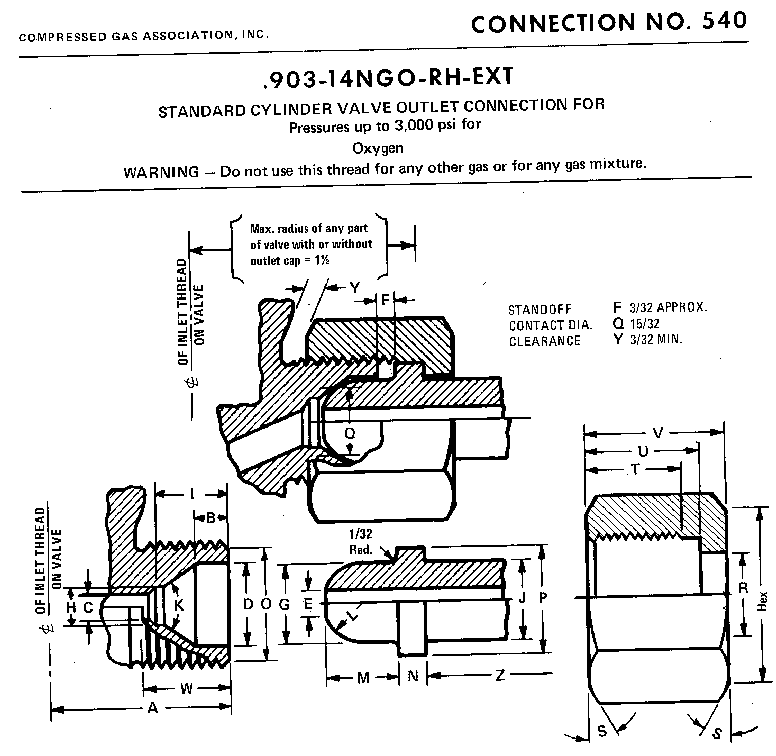Prometheus21
Mechanical
Hello everyone,
I am currently designing some new filling equipment for the compressed gas industry in my country. Relevant gases include oxygen, nitrogen, acetylene, hydrogen, helium, phosgene, phosphine ect.
Looking into the different cylinder valve outlet connections, I am familiar with the ISO 5145, DIN 477 & DS 2404 as these are quite common in Europe. A typical thread: W21,8 x 1/14 is described in detail in DIN 477; thread size, thread dimensions, thread tolerances and recommended tap diameters. The standard also describes the required sizes for outlets, gaskets, connectors, union nuts and screw caps. The Maryland Metrics thread chart also describes the thread form in detail, and is of great use.
I am however stumped when it comes to the CGA fittings and the NGO threads as I am unfamiliar with them. Does any of you know which standard(s) describe the following fittings and accompanying threads?
CGA540 - 0,903"-14 NGO ext.
CGA580 - 0,965"-14 NGO int.
CGA680 - 1,045"-14 NGO int.
Thank you for any input you may have!
I am currently designing some new filling equipment for the compressed gas industry in my country. Relevant gases include oxygen, nitrogen, acetylene, hydrogen, helium, phosgene, phosphine ect.
Looking into the different cylinder valve outlet connections, I am familiar with the ISO 5145, DIN 477 & DS 2404 as these are quite common in Europe. A typical thread: W21,8 x 1/14 is described in detail in DIN 477; thread size, thread dimensions, thread tolerances and recommended tap diameters. The standard also describes the required sizes for outlets, gaskets, connectors, union nuts and screw caps. The Maryland Metrics thread chart also describes the thread form in detail, and is of great use.
I am however stumped when it comes to the CGA fittings and the NGO threads as I am unfamiliar with them. Does any of you know which standard(s) describe the following fittings and accompanying threads?
CGA540 - 0,903"-14 NGO ext.
CGA580 - 0,965"-14 NGO int.
CGA680 - 1,045"-14 NGO int.
Thank you for any input you may have!

